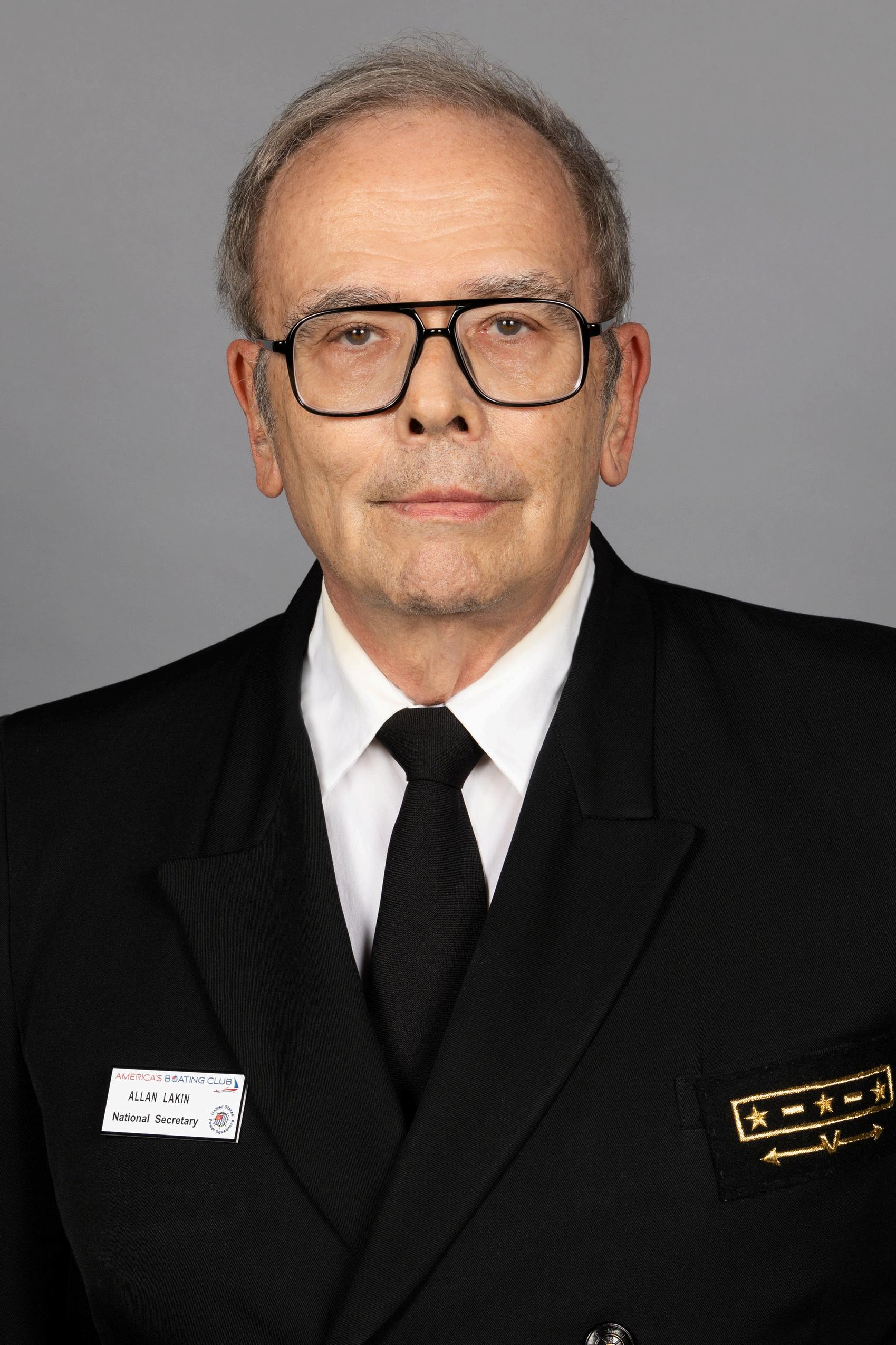
5 minute read
FROM THE BRIDGE
by theensign
BY ALLAN LAKINNational Secretary
America’s Boating Club | United States Power Squadrons recently announced a renewal of “The Power of One” campaign, a membership recruiting effort started by late Past Chief Commander Ernest Marshburn, which encourages every member to bring in at least one new member.
At first, it looks like a daunting task People don’t join groups the way they used to ABC | USPS membership has declined over the 35 years that I’ve been a member The same issues affect my wife’s Kiwanis chapter and my brother’s Masonic lodge.
About five years ago, I was introduced to Robert Putnam’s book “Bowling Alone,” in which Putnam and his co-authors dig deep into a decades-long issue: Civic groups are shrinking. The book goes back to 1920 to see a multigenerational view. Civic group membership peaked between 1950 and 1960. By 1990, membership had returned to 1920 levels. Maybe we’re not declining; maybe we’re returning to our normal state.
Is it hopeless? Absolutely not. People still join community groups. The numbers are declining, but they have never gone to zero Is there something that distinguishes joiners from nonjoiners? Can we use that difference to improve our search? As a matter of fact, there is an important difference.
According to Putnam, joiners are scarce Just 5% to 7% of the US adult population is active in a community group. That number has been steady for years.
Furthermore, it turns out that being already active in one group is a strong predictor for being willing to become active in another. If you’re a joiner, you’re really a joiner.
That revelation caught my attention. It’s Marketing 101: Hershey sells candy bars to people who already buy candy bars 95% of Americans don’t join groups. Let’s look for the 5% who do.
We can test that notion by looking at ABC | USPS members we already know. Do we have multiple interests and memberships? We sure do! Almost everyone I know is an ABC | USPS member and a member of another organization. We volunteer at food pantries. We coach and referee youth sports We serve on our church vestries and our homeowner association boards. We join fraternal lodges, Coast Guard Auxiliary flotillas and yacht clubs.
Your own group-joining habits probably have deep roots. Maybe you were a Little Leaguer, Pop Warner football player, soccer player, Scout or a 4-H’er. Ten years later you joined a fraternity or a veterans’ organization, cleaned up beaches and planted trees on Earth Day. Ten years after that, you were a homeroom mom, cubmaster and a field trip chaperone. Today’s jobs are just your current stage in a long succession.
To return to the candy bar metaphor, do people already have too many candy bars are joiners already too busy? The answer to that question gave me the last piece of the puzzle. I flashed back to the “busy person rule” I’d learned in 1966.
I was the junior assistant scoutmaster in my church’s Scout troop We needed a new scoutmaster. None of our fathers was willing to take the job. When the youth pastor listed several congregation members he would ask, I protested. Why would any of them step up to deal with a dozen rowdy 11- to 14-year-old?
Brother Novak smiled and said something I’ve never forgotten: “When you’ve got to get something done, ask a busy person.” Or, as Putnam would put it, “If you want a new member, give a job to a busy person from another organization.”
Imagine using this information in “The Power of One” campaign:
Sell candy to candy buyers. People who have joined groups tend to join still more groups.
Ask a busy person. People who have been getting things done in groups want to continue getting things done in groups.
Build your prospecting list. I joke that our best clues will be the bumper stickers saying, “I was an Eagle Scout” or “Proud hockey mom.” (If it says “I was a Sea Scout,” even better). The bumper sticker will be sitting right above the trailer hitch. You’ve just found a boater (is there any other use for a trailer hitch?) with a favorable experience in a social group.
One more thing: When you find a joiner, sprinkle some coconut on that candy bar. Tell them that we are their kind of people because we love to mess about in boats with other boaters.
My elevator speech has changed I have it oriented toward that precious 5% to 7% of busy people I would like to have in my club:
What is America’s Boating Club | United States Power Squadrons? It’s about community service and fellowship on the water. Tell me about your community, and I’ll tell you about mine.
ABOUT THE AUTHOR
Vice Commander Allan W. “Al” Lakin is a life and sustaining member with 33 merit marks. He joined Valley Ho Power Squadron/13 in 1990, transferring to The Valley Sail & Power Squadron as a charter member in 2008. Currently, he is squadron educational officer. Al is a past squadron commander of Valley Ho, past district commander of District 13, and has served on seven national committees with two nonconsecutive terms as chair of the Rules Committee. A retired manufacturing executive, he holds a bachelor’s degree in chemistry and a master’s degree in plastics engineering from MIT and a Juris Doctor from Loyola Law School. He is an inactive (retired) member of the California bar. Al lives in the Encino district of Los Angeles with his wife, Sandra, and has two adult children.








